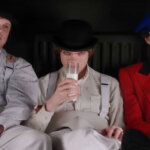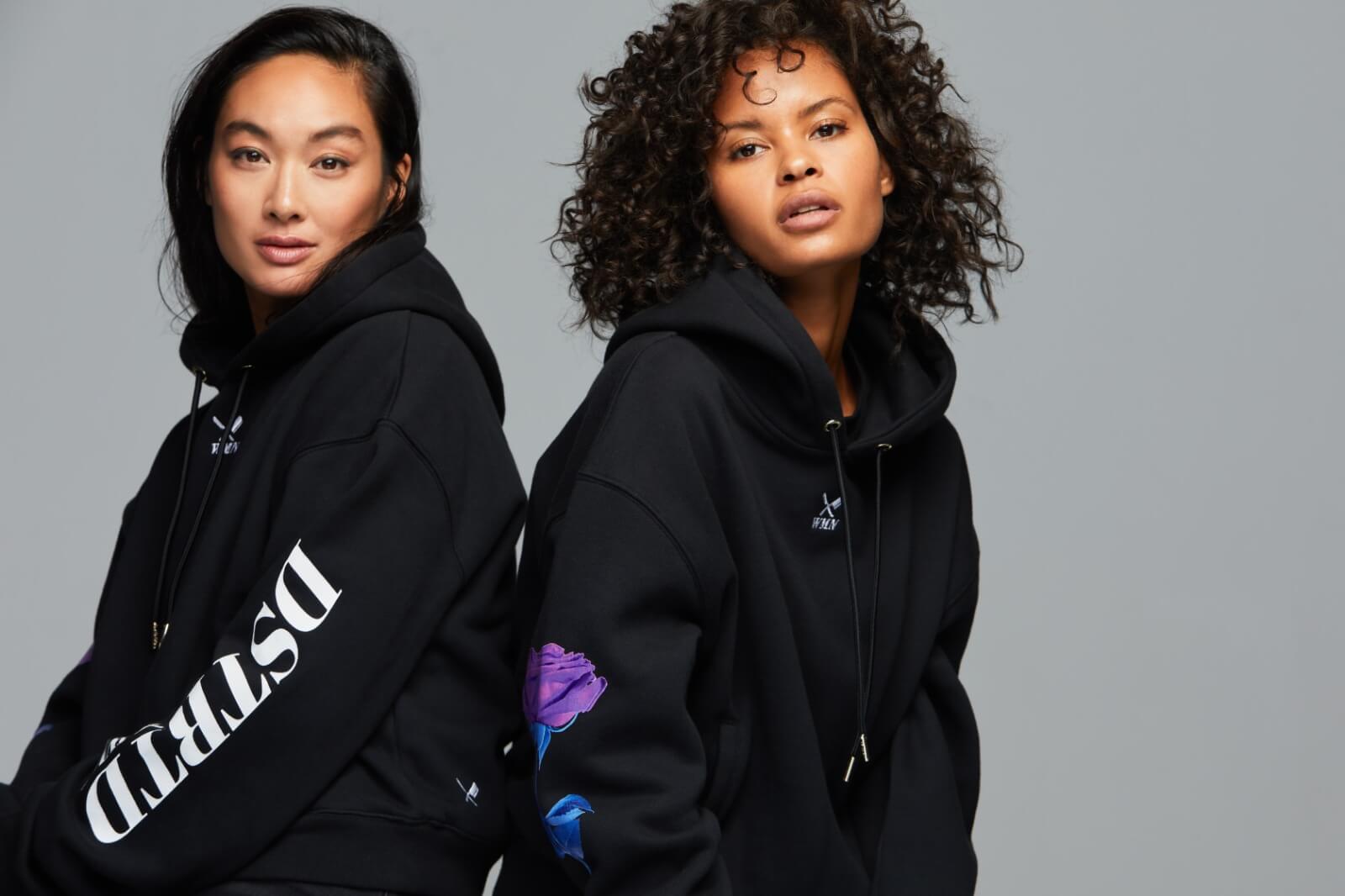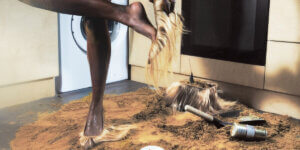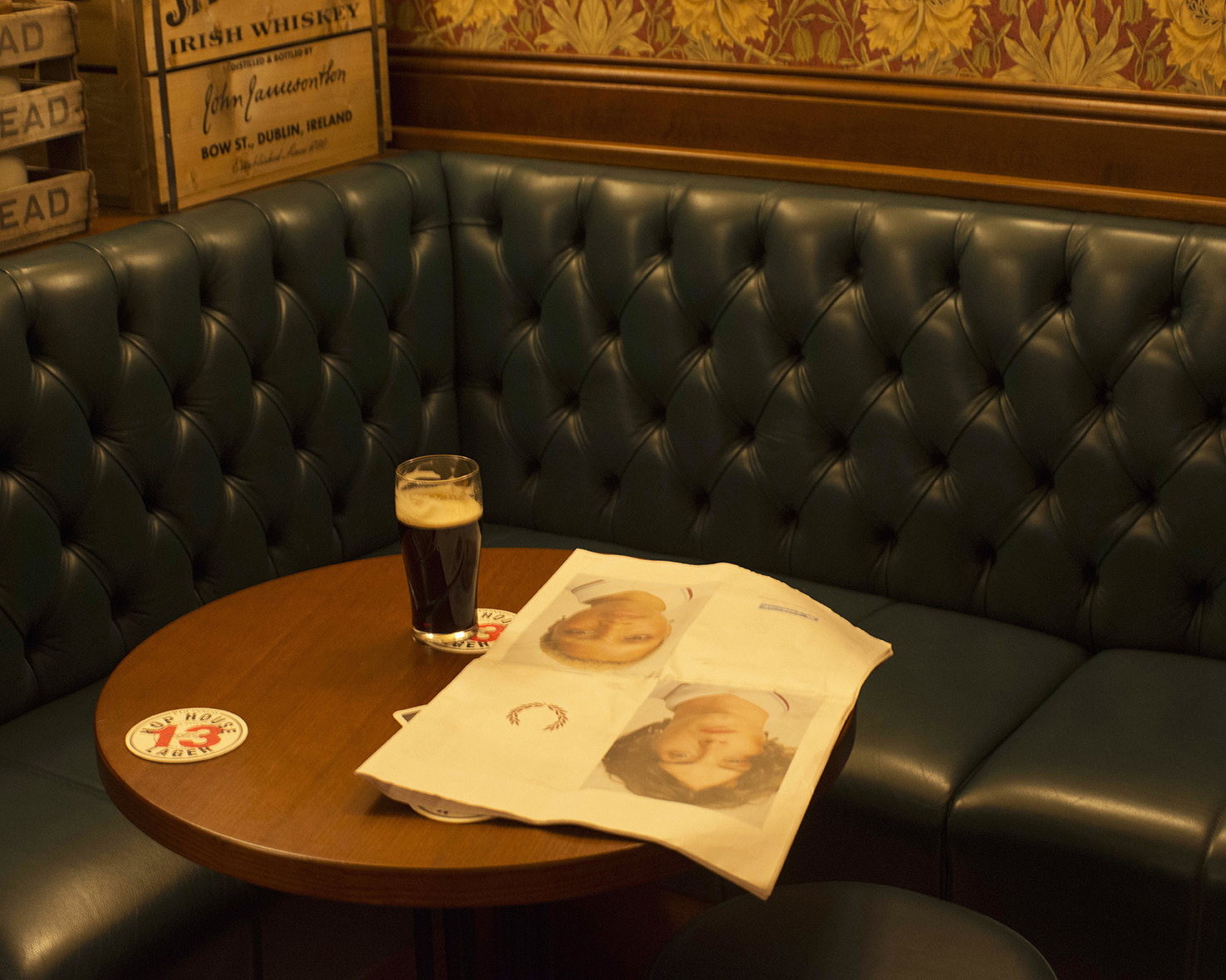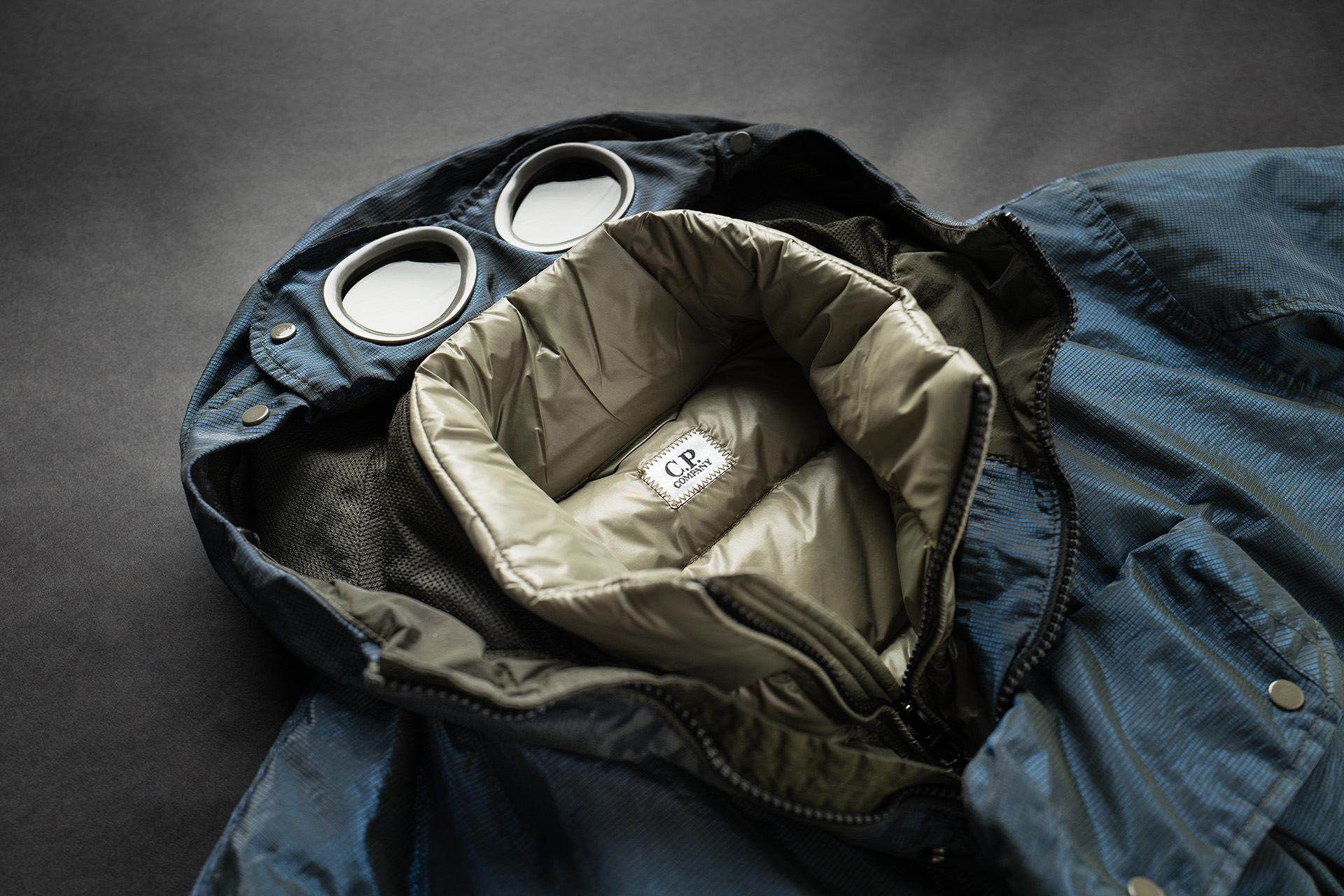There is no denying that fashion loves a niche movie reference. From Jun Takahashi’s penchant for cult classics to The Hunger at McQueen – the feedback loop between fashion and film is, at times, more of a scribble than a clean circle. Look at Salvatore Ferragamo, who in the last seasons created a collection inspired by the uniforms worn by Uma Thurman and Ethan Hawke in the 1997 sci-fi classic Gattaca. For AW21, Ferragamo’s creative director Paul Andrew proposed “a new uniform for our new world”, with colours such as “boy scout green, janitor brown, girl guide mauve and cheerleader pink”.
Almost every season, we see the mise-en-scene of cinema reimagined through the eyes of a designer, and while it’s usually subtle – a wallpaper print, a score, a scene’s colour palette – it’s key to uncovering the kernels of meaning buried deep within a collection. Although often relegated to an aside in the show notes, these cult crossovers are not only evidence of fashion’s polyphonic influences, but also of a designer’s ability to melt down pre-existing worlds and reshape them under a new, future vision. After all, a designer’s universe extends far beyond clothes, and the relationship between film and fashion is only the beginning.
GUCCI AW15: THE ROYAL TENENBAUMS
Even if Alessandro Michele’s kitschy Gucci often gets compared to the light-headed cinematography of Wes Anderson, no character had yet such an importance to the designer as he Royal Tenenbaum’s Margot Tenenbaum. As part of Gucci’s AW15 show, Michele’s first as creative director, the designer sent out a series of doppelgangers of the chain-smoking ingenue, complete with blonde bob, vintage-looking fur coats and money loafers. Then, as part of his SS17 collection, the designer produced the same blood-orange zebra print that covered the walls of Margot Tenenbaum’s bedroom. If the Margot clones of AW15 were too heavy-handed, this was so niche it almost passed as just another garish Gucci print.
MOSCHINO AW22: 2001: SPACE ODYSSEY and MOSCHINO SS17: VALLEY OF THE DOLLS
Although Jeremy Scott’s take on the Autumn/Winter 2022 catwalk shows screamed “Marie Antoinette” in terms of design, the classical music and elegant set were straight out of Stanley Kubrick’s 2001: A Space Odyssey, with its glowing white floor, Renaissance paintings, ornate French mouldings and Louis XVI décor. But the models seemed to be channeling the whimsical “Be Our Guest” scene from Disney’s Beauty and the Beast. Nothing says “Let Them Eat Cake” more than a fashion show featuring clothes artfully designed to resemble the furnishings of a European palace of a bygone century. Seriously, Moschino creative director Jeremy Scott transformed his models into everything from cupboards to carpets to harps!
For SS17, Jeremy Scott sent out a parade of life-size paper dolls, honouring the classic novel turned 1967 film Valley of the Dolls. Every crease and fold of the fabric had been printed, and when the models turned, they revealed stark white 2D backs, as if each garment had been cut from a stencil. But Scott did not stop there: In the film, the word ‘doll’ is used interchangeably with ‘pill’, as the protagonists turn to prescription drugs to numb the pain of their lives. Accordingly, the invitation to Scott’s show was actually a prescription pill bottle filled with placebos and a scribbled doctor’s note. The clothes, too, were laden with kitschy pill motifs. These references were underscored by the stiff paper tabs that cut a dramatic silhouette as they protruded from the clothes, as if they were to be folded back and clipped onto a retro children’s toy.
RAF SIMONS FW18: CHRISTIANE F
The visceral 1981 drama Christiane F. – We children from Bahnhof Zoo has been a constant reference point in Raf Simons’ work. First for AW01, when the film’s poster was pinned to clothes like DIY band merch, and later for AW18, which took the gritty classic as its creative inspiration. Set in a train station in the former West Berlin, Uli Edel’s groundbreaking film chronicles the true story of a 13-year-old runaway’s descent into drug abuse and heroin addiction. The exploration of the film’s adolescent protagonists, whose sullen faces are printed on shirts, coat patches and jeans pockets, demonstrates Raf’s penchant for subverting the tropes of youth culture and exploring the darkest corners of the human psyche.
THOM BROWNE SS19: FRIDAY THE 13th
Browne is a provocateur by nature, and pushing the performative boundaries of fashion is as important to him as advancing the awe-inspiring technical aspects of his work. He reimagined the most innocuous signifiers of summer – beach balls, watering cans, ice-cream cones – as Friday the 13th-style face masks, giving the collection an ominous undercurrent.
UNDERCOVER AW19: A CLOCKWORK ORANGE and SUSPIRIA
This collection was built around Stanley Kubrick’s A Clockwork Orange, his 1971 adaptation of Anthony Burgess’s short but shocking dystopian novel of ultra-violence and state-administered extreme psychiatry. Malcolm McDowell’s saturnine features as the protagonist Alex – sometimes grinning sinisterly under a bowler, sometimes bloodied and fanged, sometimes with his eyes gouged out – were repeated on the clothes. So too were fragments of Nadsat – Alex’s melodious bastard dialect – and the face of Beethoven (“old Ludwig Van”), as well as recording details of the Berlin Philharmonic microcassette Alex plays as part of his flawed aversion therapy.
From A Clockwork Orange to 2001: A Space Odyssey to The Shining, Jun Takahashi’s back catalogue of Undercover collections reads like an anthology of cult film classics.
For AW19, the Japanese designer flipped through the pages and picked out Suspiria. Not the 1977 Dario Argento film, but Luca Guadagnino’s 2018 remake, which, despite running a full hour longer than the original, tells the same unsettling story of a Berlin dance company-cum-coven. In fact, Takahashi even approached Guadagnino about using stills from the film as part of the collection. The result? Lurid scenes and characters silk-screened onto trapeze dresses and blouson hoodies. Tilda Swinton was emblazoned on a knee-length coat.
ALEXANDER MCQUEEN SS96: THE HUNGER
Tony Scott’s horny vampire flick The Hunger was the subject of Alexander McQueen’s SS96 show. In the film, an icey David Bowie and Catherine Deneuve romp about, feeding on the blood of goths and luring hopeless victims into sex-fuelled death traps. The designer added bondage straps to some of the looks and made liberal use of a blood red colour. Among the more outrageous elements of the show were models in casts and a see-through bustier filled with worms.
Header Image: © Gucci Campaign referencing Stanley Kubrick’s “A Clockwork Orange”








